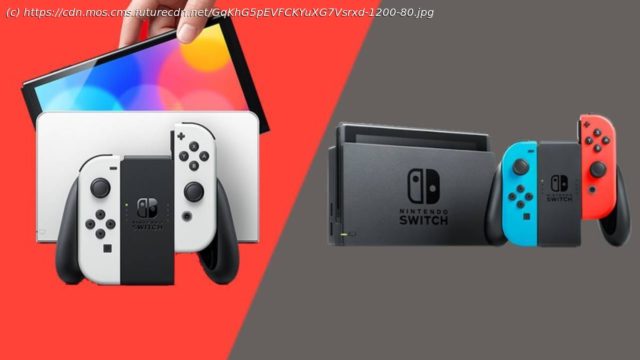Is the Nintendo Switch OLED worth upgrading to? Find out what it offers over the classic Switch in our versus.
The Nintendo Switch OLED is the fourth major release in the Switch generation of consoles. First, there was the original Switch in 2017 and the Switch Lite with its non-removable controllers in 2019. Then Nintendo released the refreshed original Nintendo Switch with improved battery life, again in 2019. The Nintendo Switch OLED is the most exciting upgrade to this handheld series to date, however. Why? Well, the clue is in the name. This new version has an OLED screen, similar to the displays of top phones like the Samsung Galaxy S21. In this piece, we’ll look at why the Switch OLED is better than the LCD original, and the other upgrades you get with the Nintendo Switch OLED. The Nintendo Switch OLED costs $350 / £309 / AU$539, with a release date set for October 8,2021. That’s $50 / £30 / AU$90 more than the original Switch was priced at, which cost $300 / £279 / AU$449. Nintendo has confirmed the Switch OLED will be available from October 8, but stock is likely to be limited due to the ongoing global semiconductor shortage. This has impacted both the PS5 and Xbox Series X consoles since they launched in November 2020, so you might want to pre-order Nintendo’s console or risk missing out. The Nintendo Switch OLED looks similar to the original Switch and its 2019 refresh. It has removable Joy-Cons, the same button layout, and even comes in the familiar bright Neon Blue and Red color scheme. However, the version you’ll see most online in the run-up to the Switch OLED’s release is the new White version. This more sedate, grown-up color scheme is the sort of garb we expected to see the rumored Nintendo Switch Pro dressed up in. It may not be the Nintendo Switch Pro, but this is the closest we’ll get for now, and many of the leaks surrounding the Pro are found in this redesign. There are some other important design changes. The thick bezels of the original Switch’s display have been significantly trimmed down, and the 6.2-inch LCD panel has been replaced with a vibrant 7-inch OLED panel. This gives the new Switch a less dated appearance and means there is no significant difference in size with the new model, despite the use of a larger screen.






